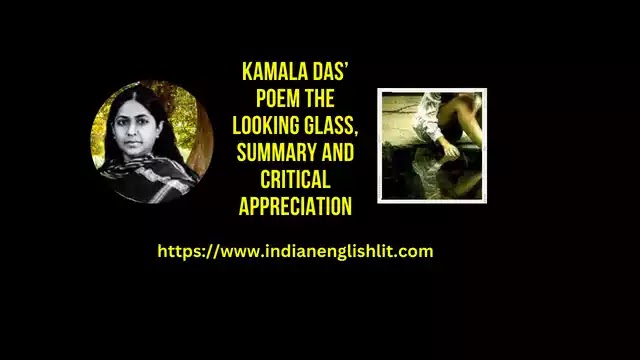Coolie is a realistic novel with an effective tragic ending which creates our sympathy with the poor simple labourers. It is a tragic story of the endless miseries and tortures, the life and death of a young boy Munoo. He is an orphan and at the tender age of fourteen, he is made the domestic servant of Babu Nathoo Ram. This life is not only drudgery but the first most miserable experience and a realisation of his helplessness and poverty.
 |
| Mulk Raj Anand’s Novel Coolie As A Social Tragedy |
In the beginning, he is thrilled to see the glorious life of the city, he develops so many dreams and desires but he is crushed under the burden of the machine dominated society where money is the only God. He now knows for the first time, that in this society, man has no worth. It is in this world that Munoo's tragic life begins and he falls a victim of exploitation, injustice and is innocently ill-treated and exploited. Thus, the Sham Nagar episode is the first episode in the tragic drama of exploitation. Bibi Uttam Kaur beats and abuses him. He is no longer able to bear the continuous torture and beating. Then, he is taken to Daulatpur by Prabha Dayal, the owner of the pickle factory. He is kind to him because he himself had come there like Munoo. But his partner, the goat faced Ganpat beats and abuses him. The pickle factory is closed because of the treachery of Ganpat and Munoo is compelled to work as a coolie in the grain market. He meets an elephant driver of a circus company who is very kind to him. He takes him to Bombay where one more tragedy is waiting for him. He suffers extreme tortures in the textile mill. Here he is a full-fledged victim of the capitalistic exploitation. Suddenly after a roadside motor accident, he is taken to Simla by Mrs. Mainwaring. She employs him as a domestic servant, a rickshaw puller and exploits him sexually as well. His energy is sapped and he becomes the victim of consumption. Consequently he meets premature tragic death.
Thus, the analysis of the plot of the novel shows that Coolie is the tragic epic in prose. It is a social tragedy of the common man. Munoo is the great tragic hero of this epic. He is a tragic hero in the sense of a modern tragedy and not in the way of the old tragedies performing heroic deeds. His tragic death is a symbol of the tragedy of the millions of workers and coolies not only in India but all over the world. So, it is not an individual tragedy but universal in its scope. In Sham Nagar and Daulatpur, he maintains his identity and individuality but there are clear signs that it is gradually decreasing. In Bombay Munoo becomes a part of the toiling - struggling and starving masses. Anand has thus universalised the individual tragedy of Munoo. It is not the tragic death of only an individual but the theme and presentation is based on widespread social injustice and corruption. The central theme of the novel is the tragedy of a simple boy and he is devoid of the right to happiness. Munoo shows the characteristics of a good citizen but he is unfortunate and dies tragically in the long run.
In this novel, there are social forces which are responsible for the tragic end. Coolie has been classed as a social tragedy because it is a study of the tragic effect of the cruel inhuman social forces on an individual. Munoo has become all the more tragic because he suffers acutely when he is merely a small child. There are many social forces which regularly contribute to Munoo's tragedy. He realises these forces working against him since the very early age. Extreme poverty forces him to leave his native village. He never succeeded in going back to his village and finally dies in Simla only two years after he has left his native place.
Moreover, Anand reveals another factor of this powerful tragedy. Poverty is responsible for this exploitation both in the town and the village. The landlord has exploited his father and he dies a tragic death. Similarly poverty leads them to tolerate the exploitation by the industrialists. This is the chief cause of suffering on the part of the teeming millions of have nots. The novelist has told, “For though Munoo was young, he had more than a vague idea of how Jay Singh's father was responsible for his impending misfortunes.” He remembers how his father had died a slow death of bitterness and disappointment. His mother was left a penniless beggar. She worked very hard to support the child. At Sham Nagar, he is beaten even more cruelly than a slave. His glorious romantic vision of the city life is suddenly shattered. Bibiji is the first tormentor and exploiter who makes him realise the wide gap between the rich and the poor. Capitalism and industrialism are the greater forces of exploitation and they can be seen working alike in Daulatpur and in Bombay. The terrible picture of the tragic exploitation of child labour is seen in the description of Munoo working in the pickle factory. “All strength had gone out of his body and left him a spineless ghost of his former self.”
In Bombay, there is the picture of Munoo's exploitation and tragedy and gained universal dimensions. He is unfortunate victim. He is put to cruel forces of capitalism and like Hari suffers from insecurity, low wages and inhuman treatment. In the Bombay phase, there are two more forces at work. On the one hand, the ignorant labourers suffer from racism and communal fanaticism and on the other hand they are the tools in the hands of communists. Both capitalism and communalism exploit Munoo and he escapes death just by chance. The politicians have their own ends and in this whole process, poor Munoo loses his job, runs here and there to save his life and earn his livelihood in some or the other way. Anand has also shown the exploitation of the Indians by the British capitalists. Jimmy Thomas, the Chimta Sahib is a great exploiter. Mr. White is interested only in his profits and does not care for the good of labourers. There is also the exploitation of Munoo by Mrs. Mainwaring in whose service he at last dies exhausted and lost. Thus, he is real victim hero of the money dominated Indian society.
One more fact is worth consideration. These social forces are beyond the control of the hero and cause Munoo's tragedy. He has no choice before him. His destiny from the beginning is controlled by social milieu which victimises him. Here Anand is quite a naturalist in the portrayal of this aspect of his life. It is to the credit of Anand that raises this small boy not only to the status of the hero of this great tragedy, but also imparts him grandeur and dignity of epical heights. Thus “Anand relieves the lot of men by bestowing dignity on the victims of cruelty.” After life long suffering, he is relieved in his death. But more tragic is the fact that Munoo is an undeserved sufferer. He has done nothing to tolerate these tortures. His only fault is that he is an orphan and suffers extreme poverty. He is a victim of the evils of an exploiting economic social system and these blind social forces destroy him. He is too weak to face them and resist them. He has no power to struggle with them, silently surrenders and is cruelly crushed. His death is a powerful plea for quick social change. Thus, Coolie is clearly a social tragedy in which propaganda and art are welded together.






